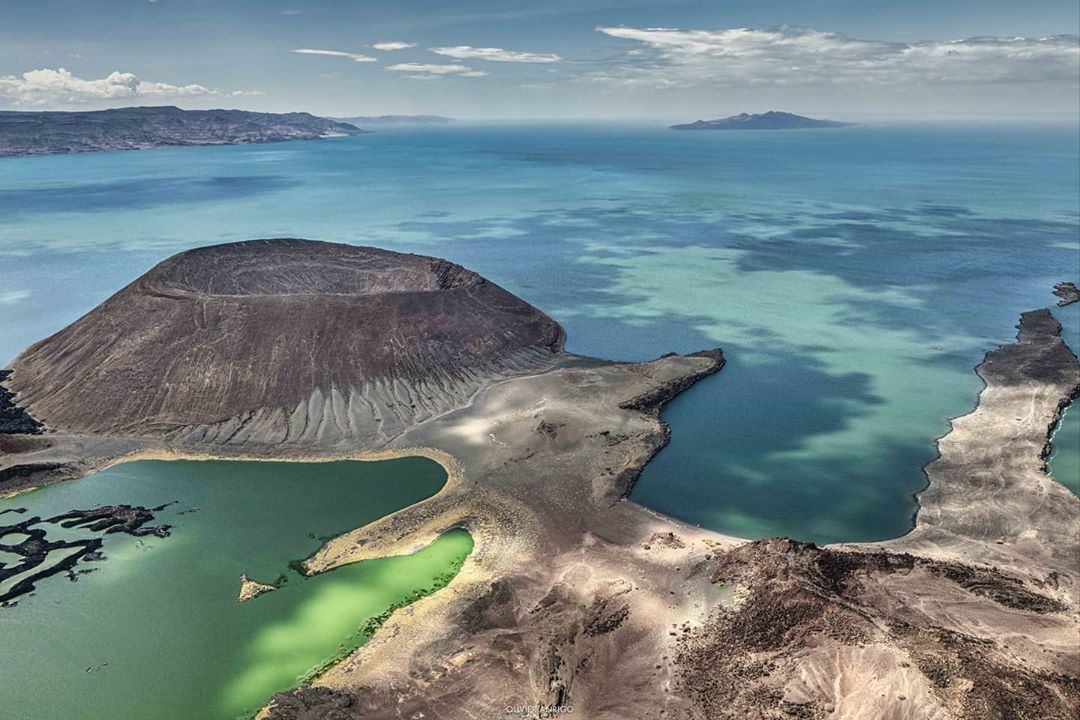Lake Turkana
Lake Turkana – also called the Jade Sea, was originally named Lake Rudolph in 1888 and was renamed Lake Turkana in 1975. The lake is famous for its greenish-blue colors and it is notorious for the strong desert winds making sailing on the lake sometimes hazardous affair. With a length of 300 km long in North-South direction and a width of 50 km wide, Lake Turkana is the largest permanent desert alkaline lake in the world as well as the largest lake in Kenya though lake Victoria shared between Kenya, Uganda and Tanzania is much larger. It is the Africa fourth Largest Lake. As the Lake has no outlet, water is lost mainly by evaporation.
The lake is rich in Soda Algae which can change the colour of the lake from Sky Blue to Jade Green, according to the effect of the wind and the sun. The algae, in turn supports large number of fish, especially the enormous Nile Perch, Tigerfish, Birchir, Nile Perch and various species of Tilapia.
Other Lake Fauna includes Hippo, and a plethora of birds, many of migratory. Of the 350 species recorded on or around the lake, only few live here all year round. This includes Flamingos, Cormorants and Kingfishers.
There are three islands in Lake Turkana – South Island, Central Island and North Island and it is possible to visit them by boat from various take off points along the shore. Central Island is breeding ground of the world’s biggest population of Nile Crocodiles with an estimated number of 12,000 animals living in the lake. Yet today there are about 400 species of birds and the lake boasts 200-300 kg Nile Perch, making it a heaven for sport fishing.
At an altitude of only 300m above sea level Lake Turkana is one of the hottest places in Kenya (and the world) with temperatures in the region often reaching 50 degrees C. Also regarded by many as the birthplace of humanity and the fossil humanoid skulls discovered here by the Leakey family in the 1960s are around 2.5 million years old.
Activities
- Lake


